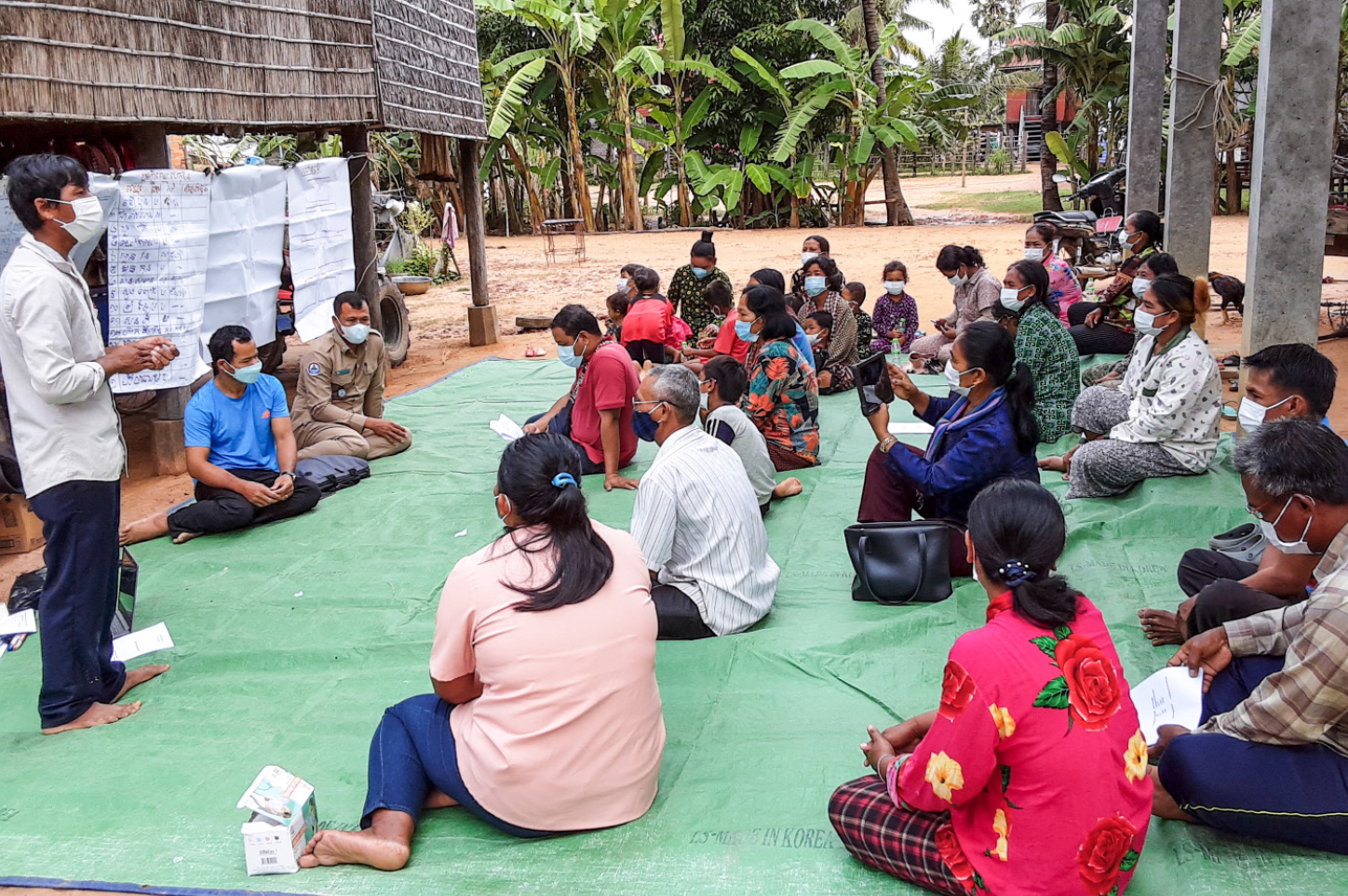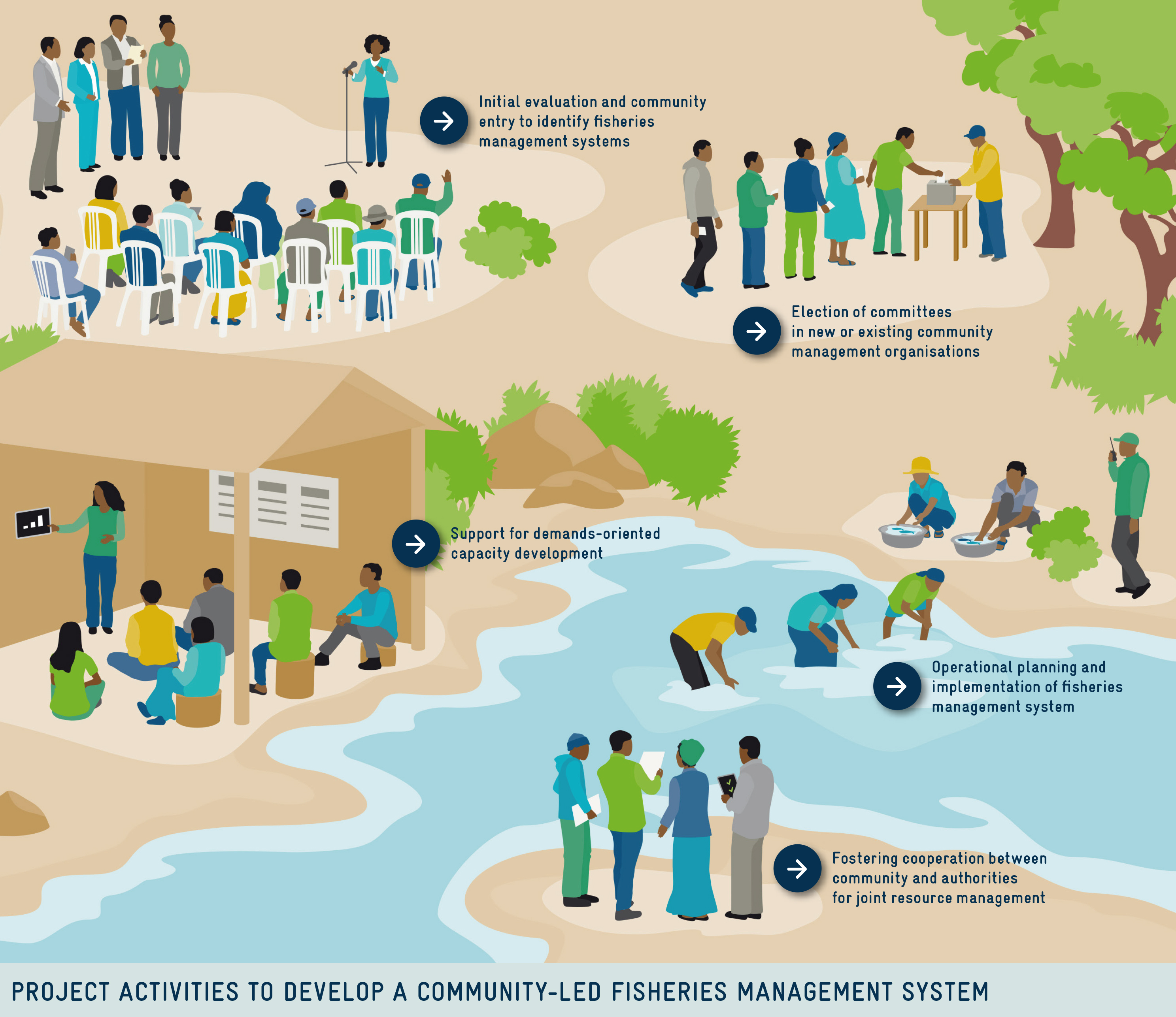


Community-based approaches refer to strategies that involve local communities in the management and decision-making processes of their natural resources. In the context of fisheries management, these approaches engage local inhabitants in conserving and sustainably managing fish stocks and aquatic ecosystems. This local involvement helps ensure that fishery management practices are culturally appropriate, environmentally sustainable, and economically beneficial, ultimately leading to improved resource management and community well-being. Such approaches are particularly relevant for small-scale fisheries in natural waterbodies, where community livelihoods are closely tied to the health and productivity of aquatic environments.
The community entry process is a systematic method to initiate successful and sustainable fisheries management by focusing on trust and close cooperations between local communities and other stakeholders. The solution outlines the measures required to establish those cooperations and a fisheries management system through the election of a management committee. Furthermore, the approach assists existing or new established committees, such as dam or community fish refuge committees to develop objectives and activities, an effective administration and monitoring and evaluation system.
As a first step, to evaluate the feasibility of a community-led fisheries management system, it is most important to comprehend the current situation in the community regarding the power dynamics between relevant players, such as local government and community representatives. Going to the right location, doing site inspections, and having one-on-one meetings with those stakeholders are part of this phase in the process. These activities can be further supported by conducting workshops or interviews with all stakeholders.
The aim of the community entry phase is to identify the existing water and fisheries management systems. This means getting together in groups with members of the community and organisations that manage and make use of the available resources. It is common to select and utilize some of the following participatory rural appraisal instruments: wealth ranking, semi-structured interviews, visualizing the needs of different groups, timelines, seasonal calendars, physical and social mapping, and transect walks, where community members and stakeholders are walking through an area to observe and document its features and issues, helping to gather local insights and information. It is used to identify potential issues with resource management and exploitation, obtain a thorough understanding of the resources, and produce recommendations that may be put into practice. The walk allows for a more in-depth and targeted discussion of the conditions on the ground, in order to understand the overall condition of the waterbodies and the overall image of fishery resource management. Typically, this procedure would also provide opportunities for deeper exploration of local interest groups’ opinions on cooperating in the management of shared resources and for more insightful discussions between stakeholders.
The initial evaluation and the community entry procedures are important steps that offer vital information for diagnosing the community’s condition and the management of water and fishery resources, as well as a path forward. There are two viable courses of action after this initial phase: creating new community groups or bolstering those that already exist.
Concerns about collaboration and the establishment of joint management can already be addressed while following the different participatory rural appraisal instruments. The discussion can find ways to reduce these and emphasize the benefits of the approach for all involved, so all stakeholders can work together for a shared purpose.
Additionally, the walk can present excellent chances to find community members who are willing and able to take on leadership roles in the management committees of waterbodies or other positions involving special responsibilities.